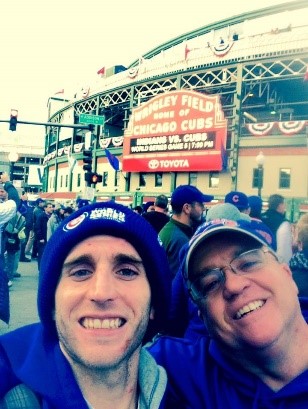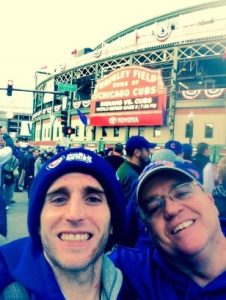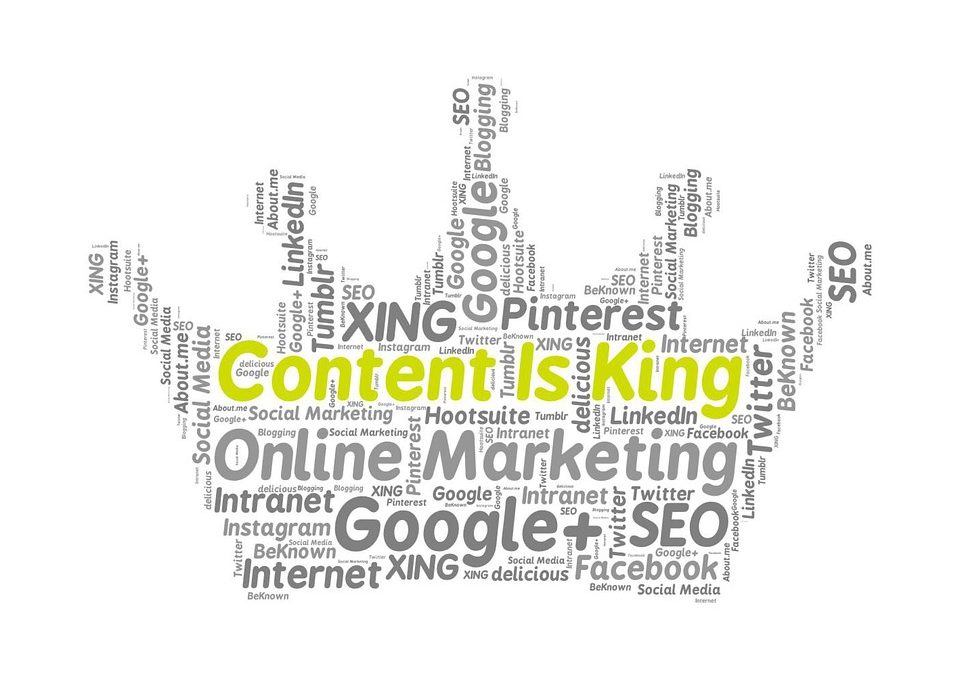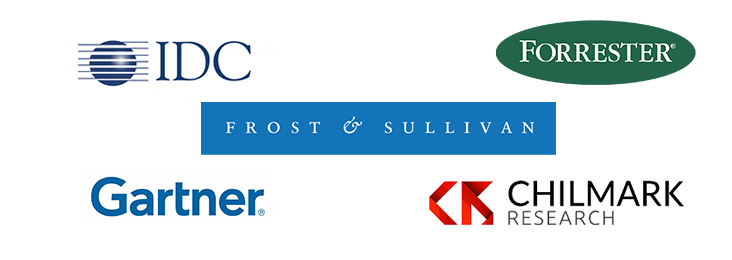
by Tim Boivin | May 10, 2017 | Blog
When it comes to product launches, many companies hang their hat on making a big splash at the biggest trade show in their industry. And then they are disappointed.
For those targeting the healthcare IT market, that usually means HIMSS. For those targeting providers, the Medical Group Management Association (MGMA) show is often cited as a great launching pad.
For payers, it’s the Association of Health Insurance Plans (AHIP) Institute & Expo. For a life science/pharma audience, eyeforpharma Barcelona is a perennial favorite due to the heavy pharma presence in Europe.
But as Caterina Lui of PR Newswire points out on the Beyond PR blog, launching during a big show is not always ideal. And in another Beyond PR post, she provides excellent insights on whether your solution is even truly ready to launch.
One of the biggest drawbacks to launching at such large industry trade shows and conferences is the sheer number of companies who are planning to do likewise. This becomes an even more pronounced challenge if your company is launching a minor upgrade to its platform or app, or if your company is a newcomer or relative unknown in the market.
In both cases, a launch as much as a month or even two months before a trade show can help build momentum going into the show, instead of being crowded out by all the PR noise generated during the show. It allows you a greater opportunity to secure quality time with reporters whose conference schedules (covering educational sessions, filing stories, doing social media posts, etc.) are pretty crammed during the conference. It also allows you to brief analysts at the top firms ahead of the launch.
Here are some other best practices for trade show launches from my Amendola colleagues:
 Lisa Chernikoff, Account Director In the best-case scenario for a product launch at a trade show, you can not only include results and ROI from a beta customer or pilot site in the press release, but also have that client available for an interview at the show (or before or after). Clients speaking about their experience with the product is much more beneficial than company execs talking about features and functionality.
Lisa Chernikoff, Account Director In the best-case scenario for a product launch at a trade show, you can not only include results and ROI from a beta customer or pilot site in the press release, but also have that client available for an interview at the show (or before or after). Clients speaking about their experience with the product is much more beneficial than company execs talking about features and functionality.
Also, make sure that the new product info highlights not only what it is, but also why it really matters for the target audience. What are the larger implications for the market? How does it relate to industry trends and issues?
Chad Van Alstin, Content & Media Relations Manager As a former editor, I always found it challenging to cover product launches at trade shows without some kind of prior knowledge. Simply telling me a company was going to announce a product pretty much melded together with all the other launches after a while.
There has to be some kind of teaser or hook a spoiler that many companies are often hesitant to give away ahead of the show that is released to the media a week or two in advance. Otherwise, it all just becomes noise after a while, especially with a huge show like HIMSS. I think too many companies rely on the fact that editors will simply want to cover whatever it is the company is doing but in a market with so many new names added to a long list every year, that’s just never the case. You have to spoil things a little bit in order to drum up interest.
 Amy Koehlmoos, Senior Account Director Leverage the power of social media – create a Twitter campaign around the product launch and use the show’s #hashtag to reach attendees. As with any campaign, frequency is key, but be sure to follow best practices and include plenty of non-promotional tweets to maintain an optimal content mix.
Amy Koehlmoos, Senior Account Director Leverage the power of social media – create a Twitter campaign around the product launch and use the show’s #hashtag to reach attendees. As with any campaign, frequency is key, but be sure to follow best practices and include plenty of non-promotional tweets to maintain an optimal content mix.
Rich media (images, videos and graphics) will help your tweets stand out above the noise, and don’t be afraid to get creative. People are much more likely to share a clever meme than a picture of a widget.
Stephanie Janard, Senior Writer — If you’re launching a new software solution, there’s no hard and fast rule that says you have to actually demo it. In this era of value-based care, why not stage a demo that  shows how life can be better as a result of using your newly launched software or app? Likewise, if you have a tangible, physical product to demo, make a real show of it preferably with a real-life example. If you can get champion customers on the act, all the better.
shows how life can be better as a result of using your newly launched software or app? Likewise, if you have a tangible, physical product to demo, make a real show of it preferably with a real-life example. If you can get champion customers on the act, all the better.
So there you have it from the A-Team experts (and PR Newswire). Should you bet it all on a trade show launch or not? It may be a crapshoot, but make sure you evaluate all your options both at the show and in other timeframes before committing your entire marketing budget to the effort. And please share your thoughts below on what you have seen that works well for a product launch either at, before or after a trade show.

by Tim Boivin | Feb 27, 2017 | Blog
“The light which has been shed on mankind by the art of printing has eminently changed the condition of the world.” Thomas Jefferson, writing to John Adams, 1823

Thomas Jefferson, champion of a free and independent press
There has been a lot of attention paid lately to the rise of “fake” news, alternative facts, and the role a free and open press should play in a democracy. You can read about that ad nauseam on Facebook, Twitter, news portals and even GASP in your daily print newspaper! (Yes, they do still exist.)
I am not here to debate the merits of the respective positions on these political and cultural issues. What I am here to do is to say thank you to the healthcare IT press who cover our clients here at Amendola Communications (AKA, the A-Team).
We just finished #HIMSS17, by far the biggest conference of the year for our clients. We had more than 20 clients there and scheduled more than 130 meetings with the media and analyst firms at the conference. It was an unbelievably extensive and intensive effort by the A-Team over the past two months, and as the managing director for the agency I applaud their hard work over the past two months.
But I am also a former member of the press, a business writer, bureau chief, editor and yes, the worst of the worst, a sports columnist by training and trade. So I also want to applaud all my friends in the healthcare IT press the folks who took countless calls, tweets and emails all day long for weeks on end from me and the rest of the A-Team, not to mention dozens of other PR agencies and departments around the country, prior to the show.
All I can say to my friends in the media is thank you, again.
What gets lost in the rush to stake out our positions and perspectives on whatever is published through the media either in print, through the airwaves, or through digital channels is the value that a free and open press does bring to our society.
Just in our little corner of the world Healthcare IT that value comes in the form of informing, educating and influencing technology buyers. It comes in the form of honoring industry innovators and staging thought leadership events around the country and world. It comes in the form of educating readers on best practices in healthcare. It comes in the form of driving interest in topics such as CRISPR gene-editing, persona-based behavioral analytics, and value-based care and reimbursement.
So again, thank you to all of the A-Team’s friends in the media.There are so many, many of you who met with us at HIMSS 17 and work with the A-Team every day throughout the year to inform and educate the healthcare IT industry.
You are making significant, worthwhile contributions to our industry that often go overlooked or underappreciated but shouldn’t not in an industry as important as healthcare IT, not for an audience that has as significant an impact on the well-being of the entire American public every minute and hour of every day.
As Jefferson said to Adams, your work continues to shed light on mankind and eminently changes the condition of the world in which we live. And for that we here at the A-Team thank you all so very much.

by Tim Boivin | Jan 25, 2017 | Blog
The Associated Press named the Cubs winning the World Series as the top sports story of 2016. Aside from the fact that Captain Obvious must have been moonlighting for the AP sports department this year, there are two critical lessons that PR strategists can take from the Cubs championship season to play winning PR.

The author (right) with his son Jeff outside Wrigley Field before Game 5 of the 2016 World Series. Cubs were down 3-1 at this point but came back to win the Series 4-3. They had a plan, and stuck to it.
Have a plan and stick to it
When Theo Epstein became President of the Cubs, he was upfront with the fans. He said he had a plan but the fans would have to be patient. He was confident it would work. For fans (like me) of a team that at the time had gone more than a century since last winning the World Series, that was a big ask.
But Theo stuck to his plan, as he sought to build a “foundation of sustained success.” He focused on building the pillars for future long-term success around younger players the team could develop in their own image, such as Kris Bryant, Anthony Rizzo, Addison Russell, and Javier Baez.
A team built with the compass of a guiding philosophy that everyone buys into has a much greater likelihood of winning the World Series. And so it is in PR.
In the haste to generate immediate leads for the sales team, a PR plan is slapped together with lofty and often unachievable short-term goals Page 1 story in the Wall Street Journal, interviews on CNBC or Fox Business News, feature in the New York Times. But without first building the PR plan basics and getting everyone on the team to buy into the goals, those lofty aspirations will remain out of reach, especially if you are starting from a position far back in the standings of your industry.
Basically, you’re trying to hit an 8-run homer to take the lead when you are behind 7-0 in the first inning, instead of think about how to move runners from base to base within your integrated marketing plan to put (and keep the) pressure on to take the lead in your market.
Instead of swinging for the PR fences, start first by looking to hit some singles and doubles. Understand your priorities, where your fans (your prospects and customers) are, what challenges they have, what will interest them. Then build a strong content lineup that gets and keeps them circling the basepaths with you as they tap into your bench for your depth of industry knowledge as they make their purchasing decisions. That’s a proven winning PR strategy.
BUT Adjust on the fly
The Cubs went through some tough times during Theo Epstein’s early years running the club. They lost 101, 96 and 89 games his first three years, as the team looked to unload the bad attitudes, the bad contracts and the bad fundamentals that had jinxed the team for decades. They were progressing, albeit slowly, and adjusting ever so slightly on the fly only when it made sense.
Then Joe Maddon became available to manage the team. Maddon was a proven winner who worked with young players throughout his tenure in Tampa Bay, making repeat trips to the playoffs against much bigger-market teams with much larger payrolls, so the Cubs jumped at the chance to bring him in.
They also added several playoff-proven veteran pitchers, even though their plan focused initially on young hitters. The time was right to go for it all. They were winning, but they adjusted on the fly and got even better.
That’s what your PR team needs to do as well. There will be a lot of swings and plenty of misses as you look to see what scores with your prospects, but once you start making contact with the ball look to adjust the program to get even better. The unique buying personas who may be interested in your solutions may not swing at a webinar, but they may subscribe to your blog or pay attention to a particularly insightful infographic.
Then start going for extra bases with more exclusive, deeply researched thought leadership pieces placed in major healthcare industry trade publications, or white papers distributed as part of an integrated digital marketing campaign. You may want to build on your winning streak with videos or a serial ebook that takes those leads being generated and keeps them coming back for more and more compelling content.
Keep adding to your PR program based on what’s working, and don’t be afraid to trade off something that isn’t working for something new.
Extra Innings
With PR, like any sport, practice makes perfect. But along the ways, bad things can and will happen. Your executive team can lose a key player, your organization may face a communications crisis due to a disgruntled ex-employee or dissatisfied customer, or an industry analyst may criticize your solutions.
Bad things happened to the Cubs, too, late in the game against the Indians. The Cleveland team came from behind to tie the score, sending the game into the 10th inning tied.
That’s when the most disappointing player on the Cubs, Jason Heyward, stepped up during a rain delay and reminded his team how good they were, that they were ready for what happened to them. And that they could win. And they did. The World Series. In my lifetime. I can die a happy man.
By building your PR plan to be fundamentally strong, by not being afraid to try different things to see what works, by leveraging the depth of knowledge on your bench to create strong, compelling content you too can be World Champions, in PR.

by Tim Boivin | Oct 19, 2016 | Blog
The New York Times recently reported on sponsored content becoming King in a Facebook World. Advertisers have discovered that traditional digital advertising, such as banner ads, are too easy to ignore. So instead they are focusing on delivering information not only to the right audience at the right time rules the day, but in a way that blends in with the rest of the content.
If you’re a Facebook user, think about the “posts” with headlines such as “19 things the producers of the Beverly Hillbillies hid from fans.” It sounds like a fun article, and there are some interesting tidbits if you decide to go there. But the editorial is really just an excuse to get you to look at ads.
The issue I had with The Times’ article is the reporter, like many in the marketing world, sometimes bleeds the meaning of the term “sponsored content” in almost a synonymous manner with what those in the marketing world may also define as content marketing or native advertising.
These terms have some subtle and not-so-subtle distinctions they are anything but one and the same. It’s important to understand the difference to ensure your execution of your digital marketing program follows your strategy.
Content Marketing
Content marketing is somewhat of a catch-all phrase used to describe the idea of informing customers and prospects about industry issues and other topics to generate interest in your organization and its products rather than overtly “selling” them.
The Content Marketing Institute defines content marketing as “a strategic marketing approach focused on creating and distributing valuable, relevant, and consistent content to attract and retain a clearly defined audience and, ultimately, to drive profitable customer action.” Really, it’s a great way to build your brand as well as sales leads.
Yes, content marketing can and often does incorporate native advertising and sponsored content which is where the confusion regarding the three strategies comes in. But you don’t have to incorporate either native advertising or sponsored content within your overall content marketing strategy if your budget doesn’t allow for it, or if you have other priorities.
The key factor required for executing a “free” content marketing strategy is having subject matter experts who can provide compelling, authoritative content on a regular basis. Editors for leading media outlets are often in search of such thought leadership, especially now as their content needs continue to grow and their in-house staff shrinks. If your subject matter experts don’t have the time to develop the materials themselves, a PR agency with a strong background in journalism can help with the writing.
As long as the content is vendor-neutral (i.e., not overtly promoting your products or services) and focuses on the challenges their readers are facing or will soon face in the market, you are likely to find media outlets interested in these contributed pieces. These types of pieces have high credibility because they appear as regular content, and they can’t be bought. The content must meet the content standards of the publication.
But content marketing isn’t just about the media. Your organization’s self-generated and published content can be distributed through complimentary channels such as webinars, white papers, e-books, and case studies. It can also be published as thought leadership articles, videos and infographics either on your own blog or elsewhere on your website.
You may also want to measure the lead generation impact of your proprietary and complimentary content marketing programs, whether they are self-published or published on a third-party content distribution platform. Various metrics you can and should evaluate are subscribers to your self-published content, requests for information from webinars, and leads generated as a result of thought leadership articles, infographics or videos published on third-party media distribution platforms.
Native Advertising
The Native Advertising Institute describes native advertising as “paid advertising where the ad matches the form, feel and function of the content of the media on which it appears.” It’s similar to an advertorial, but with much more care taken to create a more seamless appearance. And without the overt self-promotion that normally characterizes advertorials.
Native advertising is an area of rapid growth. Business Intelligence Insider reports that spending on native ads will reach $7.9 billion this year and grow to $21 billion in 2018.
Native advertising is actually a subset of content marketing a pure pay-to-play brand awareness strategy that offers useful and engaging content targeted at building trust with a specific audience your organization is trying to influence higher up in the sales funnel. (Steve Olenski, a contributor to the Forbes CMO blog, breaks down the key characteristics of the six types of native advertising in this post.)
Studies have found that a good, useful piece of authoritative content distributed on a paid platform is more likely to be shared with other purchasing influencers and decision makers, helping accelerate the sales cycle. Native ads can also gain more traction via promoted Facebook posts and sponsored Twitter feeds, ideal for today’s mobile sharing world. They are also oblivious to the ad blocking technology that users increasingly rely on to escape the tyranny of banner ads and pop-ups.
Native advertising is not published with the heavy hand of traditional digital advertisements of yesteryear that directly promoted your company, products or services through a call to action (i.e., banner ads) CTAs that interrupt the natural flow of the user experience within the content distribution channel. Instead, brand marketers are finding that the friendly, helpful and consultative design of the content makes it more likely that users will engage with the content provider.
So when may you want to consider native advertising? If you have the budget from the get-go, native advertising is a great marketing asset to incorporate into your content marketing program. The IPG Media Lab, in conjunction with Sharethrough, the native advertising platform company that hosts the NATIVE conferences, found that consumers looked at native ads 52% more frequently than banner ads.
Sponsored Content
A word of caution here about sponsored content, which is often confused with native advertising. The difference is that the content for native advertising is usually developed by the vendor or their PR or ad agency; in the case of sponsored content, the platform publisher creates the relevant content in its own voice, and then fits the brand into it. This is content is usually created by writers hired by the publisher, not writers you or your agency may have recruited.
A good example of sponsored content is what The Onion did for H&R Block in April 2014 using its sarcastic humorous tone to raise brand awareness for the tax-filing company. The post, although looking much like any other Onion post, ended up being surrounded by H&R Block advertising, which can also put off some readers. (For more examples of sponsored content and native advertising, check out this Copyblogger post.)
However, sponsored content, if used properly, can help raise brand awareness by aligning your brand with content being distributed through an authoritative publishing platform. For instance, it can take the form of an advertorial, featuring a case study of one of your customers, with your brand more prominently featured within the context of a traditional ad layout. Or an executive byline, such as those that appear in digital health supplements to USA Today.
Making content work
Content remains King, but today there are many more options within that kingdom. By understanding the differences between content marketing, native advertising and sponsored content you can develop the program that best suits your goals and audience, and delivers the best ROI.
Sponsored content is available through media buys that Amendola Communications can help your organization negotiate with leading publishing platforms. The Content Marketing Institute also offers a great toolkit of checklists, templates and guides to help you think through your content marketing strategies. For more information on Amendola’s content marketing and media buying capabilities including thought leadership and sponsored content campaigns please contact Jodi Amendola at jamendola@acmarketingpr.com.

by Tim Boivin | Apr 12, 2016 | Blog
In the Old Testament, Jacob’s Ladder refers to the connection between earth and heaven that Jacob dreams about during his escape from his brother, Esau. Healthcare tech companies dream of a similar ladder the connection between the grounding of their value proposition in the market and the steps up and to the right of their competitors in the Magic Quadrant, MarketScape, Wave or Market Trends Reports.
In last week’s post, we talked about why and when you should do briefings with industry analysts such as Gartner, IDC, Forrester, Frost & Sullivan and Chilmark . Other analyst firms who may benefit from a briefing with your organization throughout the year and not just before HIMSS include Ovum, IHS and Alterum.
This week our focus is on the next steps up the analyst version of Jacob’s Ladder the ethereal briefing itself.
One Step at a Time
There has been an explosion of healthcare technology companies seeking to mine the gold rush started by the Affordable Care Act. And there has been a corresponding growth in the number of analysts and analyst firms covering the healthcare IT market.
Unfortunately, many tech marketers and executives today do not have a clear view of which analyst influencers they should be briefing, nor what story they should be telling, nor how they should tell that story.
Analyst firms add credibility by providing independent, third-party validation to IT buyers in healthcare and several other vertical industries, including financial services, pharma and consumer goods. They also provide deep expert insights on the market to vendors during briefings sometimes only through a paid relationship, but often as part of the discovery process for their industry market reports.
The Gartners, IDCs and Frost & Sullivans of the world have scores of analysts who at first glance you might think should all be interested in your company and technology. However, usually only up to four analysts participate in briefings it is much more likely that only one or two analysts will attend the briefing.
That’s where your PR firm can help. If your PR rep has a strong track record in working with the industry analysts, that person will be able to quickly separate the wheat from the chaff both in terms of which firms will have the greatest impact, and also when it comes to which analyst(s) within those firms are the best target(s), based on their coverage area(s). Firms often have several analysts focused on different points along the HIT horizon for payers, providers, pharma and consumers so you may need to schedule multiple briefings for the different target market segments.
Why is it important to take the first initial steps one at a time? If you think back to HIMSS 16, everyone seemed to be locked in to positioning themselves for population health, patient engagement or care coordination throughout the hall. Those topics cover wide swaths of the HIT landscape. Your PR rep should first drill down within those broad categories to target the most relevant one to four analysts at each firm, and then submit a compelling briefing request through the analyst bookers to secure briefings.
This usually involves creating a brief synopsis explaining your company, its HIT solutions, and your target market, as well as background on the healthcare IT experience of the executives presenting the briefing. Other information that may be requested includes revenues (past and projected), market size and competitors (more on that later).
Getting the briefing, the first steps up the ladder, is actually the easiest part. The steps get a lot more difficult as you begin to shape your vision, market position and messaging for the analyst influencers.
Tighten the Knots
There are several reasons to brief analysts it may be just to introduce them to your company, review your go-to-market strategy, or provide an update (we recommend updating analysts at least once or twice a year). You may also have a new product launch or significant corporate news, such as a merger or acquisition. Or the analyst may be doing research for a report that you want to be included in.
To have the most impact on the analyst and subsequently the tech buyers they are advising in the marketplace, it’s important to tighten the knots on the story that you tell. Usually, analyst briefings last no more than one hour. So the story your team tells has to be compelling, concise and complete all while still leaving plenty of time for you to tap into the analyst team’s market insights as well.
What makes a compelling story? First and foremost are client success stories you can share with the client. Yes, you want to provide a brief history of your company and a brief overview of its most relevant products, but don’t get lost in the weeds for either of those topics. Analysts are looking for proof points, so just like working with the media, the more compelling success stories you have to share, the more weight that will carry with the analysts.
We recommend organizing the presentation in this format:
- Make Introductions
- Encourage Analysts to Ask Questions at Any Time
- State the Desired End Result (“If you get only one thing out of this briefing, it is”)
- Preview a Success Story (should reinforce the one “get” for the briefing)
- Provide Market Overview (targets, size, challenges, competitors)
- Share Company Background (history, size, locations, top executives, number of employees)
- Provide Solution Overview (with demos and product roadmap)
- Share Key Partners (if applicable) and Customers
- Highlight Customer Impact (cost savings, improved outcomes, streamlined processes, success stories)
- Request Analyst Input (questions, feedback, market insights)
- Confirm Next Steps (schedule next update, discuss pending reports, meet at upcoming conference)
Who’s Climbing the Ladder?
Frequently, there is an internal debate that may occur when it comes to who should be included from your team for the briefing. There is no hard and fast rule it really depends on the knowledge level of the person or persons who have the most insights on the target market, your solution and the competition.
However, Amendola usually recommends that no more than three members of your team sit in on a briefing a senior healthcare business executive, someone from product marketing/development, and/or a CTO or VP of technology (to cover the more geeky questions). More is not necessarily better. One really good executive briefer is better than three mediocre briefers.
The call should be hosted by your analyst relations or PR agency rep, who should then become a (mostly) silent partner who starts the call with introductions and finishes the call with a brief recap of the information covered and a summary of the next steps. This person should also serve as the scribe for the call, so the other participants can keep their focus on communicating their key messages to the analysts and probing them for market insights from the analyst’s perspective.
Lighten the Load
One of the biggest mistakes made in analyst presentations is trying to cram 100 pounds of company/solution/market information into a five-pound rucksack as you climb Jacob’s Ladder. You do not repeat, do not want to fall off the ladder because you tried to pack too much into your PowerPoint presentation.
The ideal length for a presentation is 10 to 15 slides no more. There are a couple of reasons for this. First, it should leave them hungry for more, so it gives your analyst relations rep or PR firm a reason to follow up with additional information such as white papers, case studies or data sheets (if their questions are more technical in nature).
That’s not to say you shouldn’t be prepared to expand in detail about your slides. While you want to send a clean deck to the analyst firm, use the Notes view for your team to have information they need readily available for questions you anticipate from the analysts.
Second, most analyst firms request that the presentation be sent to them for review at least one day in advance of the briefing. The reason for this is that the analysts want to cut right to the chase in the call. By being able to review your briefing ahead of time, the hour can be spent in a more productive way than just reciting bullet points on a slide that their own two eyes have already seen. That is time better spent on exchanging insights on the market opportunity, competitors in your space, unique differentiators of your solution, or the seaworthiness of your corporate strategy and value proposition.
Also, if you are doing a demo, it is critical that the demo has been rehearsed, tested and aligned with the story you are telling in your presentation. Ideally, the demo is reflecting a real-world situation, walking the analyst through the process of how your solution solved the challenge and benefitted the customer.
Please note: demos should not go on for more than five minutes at the most. Again, this is an opportunity for your rep to set up an additional call down the line for a more extensive demo, if the analyst is interested.
The Next Rungs
Once the briefing is over, your work is not done. It is important to follow up on the action items summarized by your analyst relations or PR agency rep at the end of the call. This provides multiple opportunities to continue on up the next few rungs of the ladder influencing the influencers, so to speak, as they evaluate your climb up and to the right in the market they cover.
The next rungs could be in the form of regularly providing relevant content such as press releases, white papers, case studies or research reports; insights on the market you can share with the analyst; reviewing the relevant section of a market report that includes your company and its solutions; or providing an update in advance of a milestone event, such as a product launch. In order to sustain your relationship with the analysts, it is important to be in touch with them throughout the year, and not just in the month before HIMSS.

 Lisa Chernikoff, Account Director In the best-case scenario for a product launch at a trade show, you can not only include results and ROI from a beta customer or pilot site in the press release, but also have that client available for an interview at the show (or before or after). Clients speaking about their experience with the product is much more beneficial than company execs talking about features and functionality.
Lisa Chernikoff, Account Director In the best-case scenario for a product launch at a trade show, you can not only include results and ROI from a beta customer or pilot site in the press release, but also have that client available for an interview at the show (or before or after). Clients speaking about their experience with the product is much more beneficial than company execs talking about features and functionality.
 Amy Koehlmoos, Senior Account Director Leverage the power of social media – create a Twitter campaign around the product launch and use the show’s #hashtag to reach attendees. As with any campaign, frequency is key, but be sure to follow best practices and include plenty of non-promotional tweets to maintain an optimal content mix.
Amy Koehlmoos, Senior Account Director Leverage the power of social media – create a Twitter campaign around the product launch and use the show’s #hashtag to reach attendees. As with any campaign, frequency is key, but be sure to follow best practices and include plenty of non-promotional tweets to maintain an optimal content mix. shows how life can be better as a result of using your newly launched software or app? Likewise, if you have a tangible, physical product to demo, make a real show of it preferably with a real-life example. If you can get champion customers on the act, all the better.
shows how life can be better as a result of using your newly launched software or app? Likewise, if you have a tangible, physical product to demo, make a real show of it preferably with a real-life example. If you can get champion customers on the act, all the better.




